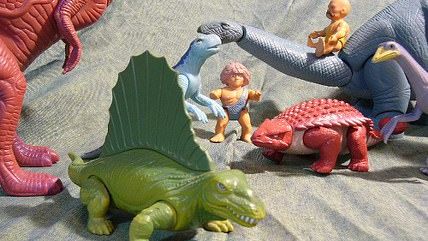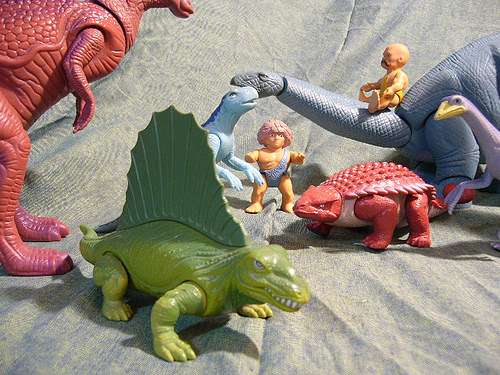Hey Politico, Apparently Public Schools Don't Teach Low-Income Minority Kids Science at All
The sad fact is that the public schools have spent more than $600 billion a year with little to show in terms of science education for public school students.


In a sensational story in Politico, Stephanie Simon argues that "taxpayers in 14 states will bankroll nearly $1 billion this year in tuition for private schools, including hundreds of religious schools that teach Earth is less than 10,000 years old, Adam and Eve strolled the garden with dinosaurs, and much of modern biology, geology and cosmology is a web of lies." Leave aside the larger argument that, in the United States, school choice supports a market of ideas, and the virtue of free thought, speech, and religion is a desirable value that should extend to parents and their children. The sad fact is that the public schools have spent more than $600 billion a year with little to show in terms of science education for public school students.
According to the 2009 science assessment from the National Assessment of Educational Progress (NAEP), also known as the nation's report card, only about one-fifth of America's high school seniors are proficient in science, and the rates of proficiency are even lower among minority students. While 27 percent of all white high school seniors were at or above proficient in science and 36 percent of all Asian high school seniors were above proficiency, only 4 percent of all Black high school seniors, 8 percent of all Hispanic students, and 13 percent of all American Indian high school seniors were proficient in science.
Similarly, a report released this month from the U.S. Department of Education found that minorities and students with limited English proficiency are more likely to be taught by inexperienced teachers and attend a high school with limited math and science offerings. For example, more than a third of schools with high numbers of African American and Hispanic students do not even offer chemistry in the curriculum—a standard sophomore class. As Education Week notes, "the results of this comprehensive survey paint a dismal picture of the state of educational opportunity, even as the federal government spends $14.4 billion a year in Title I funds aimed at helping disadvantaged students."
Matt Ladner, a senior education analyst with the Foundation for Excellence in Education, points out that Stephanie Simon suffers from a serious case of confirmation bias. He digs deeper into scores for low income students in private schools versus public schools on the NAEP science test and finds that poor kids in private schools outscore their public school peers in six out of eight comparisons and concludes that for low income kids when it comes to science there is a clear "private school advantage." Ladner asks, "How is it that these kids at hillbilly flat-earther private schools keep managing to score about the same or more often better than their public school peers on the NAEP Science exams? Does the NAEP science framework ask a battery of questions on the Book of Genesis? Does learning how to play Duelling Banjos wire the mind for multiple choice science exams?"
The bottom line is that we must weigh any religious school fear-mongering against the reality that gold standard research continues to show that disadvantaged students are performing much better in private schools.
For example, a 2010 evaluation of the District of Columbia Opportunity Scholarship by the U.S. Department of Education found that the impact of actually using an Opportunity Scholarship voucher was to increase the likelihood of graduation by 21 percentage points, from 70 percent to 91 percent. Over 90 percent of the participants in the study were African American. A similar study that followed a large group of low-income elementary students in New York City for over a decade, which was conducted by Harvard and the Brookings Institute, found that the impact of using a private-school scholarship was to raise the college enrollment rate for African Americans in the study from 36 percent to 45 percent, a gain of 9 percentage points over the control group.
The science NAEP exam covers physical science, life science, and earth and space sciences. When only 4 percent of 4th graders in Cleveland and Detroit, and 5 percent in Baltimore, are rated proficient in science perhaps we should stop worrying about less than .001 percent of the education budget potentially supporting creationism and instead look to school choice to shake up the education monopoly that produces these dismal science results for a $600 billion plus price tag.
Related: "Let Schools Teach (More) Stupid Stuff (Like Creationism)," by Nick Gillespie.
